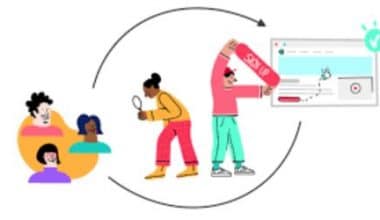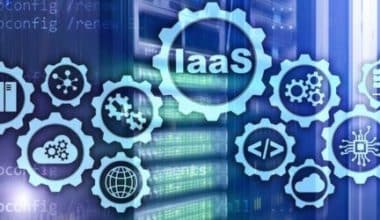Software licensing is the process through which a software developer offers their product for a price to a person or corporation. Licensing your software can be an efficient approach to gaining access to essential tools that improve business productivity. Understanding common software licenses used by a corporation to deliver a product will help you understand your alternatives while utilizing licensed software.
This page defines a software license, lists five typical sorts of them, explains why they’re important, and offers recommendations on how to use them in your profession.
What is a Software License?
A software license is an agreement that allows a user to use software and its associated functionalities. Although daily interactions with software may be identical regardless of whether you purchase or license it, each method of accessing software has advantages.
Understanding both can help you decide if licensing is right for you. Software licenses frequently impose limitations on how a user may interact with the software, and licenses may be conditional, such as a piece of software providing basic capabilities for free and more advanced functions or opportunities for a licensing cost.
What are the Different Types of Software Licenses?
There are five major software license categories or types that are used to cover various types of software and business partnerships. These cover a wide range of licensing circumstances, from free (public domain) software to paid commercial software (proprietary).
Between these two extremes, there are three classifications that apply to various types of open-source projects (GNU/LGPL, permissive, and copyleft). Failure to abide by the terms and conditions of an open-source license may result in the disclosure of trade secrets or possible legal action by the project’s authors.
#1. Public Domain Dedication
When software is characterized as being in the public domain, it means that anybody can use and alter it without restriction. This is a “permissive” license that permits you to incorporate the code into applications or projects and reuse the software as you see fit.
Businesses must exercise caution when using public domain software in projects or other critical applications for a variety of reasons:
- Public domain software may not always conform to acceptable coding techniques or meet the application’s requirements for secure software.
- Public domain code is not usually software that does not fall under certain licensing requirements. Before copying, reusing, or distributing software, be sure it is actually public domain.
#2. LGPL Lesser General Public License.
Developers that use an LGPL license have the ability to link to open-source libraries within their own software. When projects are produced or linked to include an LGPL-licensed library, the resulting code can be licensed under any other type of license, even proprietary.
The caveat is that if any component of the library is copied or modified, the original LGPL license will apply to the produced code that uses the library.
#3. Permissive
This is one of the most prevalent and popular types of open-source software licenses. A permissive license, sometimes known as an “Apache” or “BSD style” license, imposes few limitations or obligations on the distribution or modification of software. The “MIT” license is another type of permissive software license.
Differences in permissive licenses include requirements for keeping license notices and copyrights for the software, as well as how the software may be used (commercial or private), trademark requirements, and other restrictions.
#3. Copyleft
The terms of this license are stringent; these are known as reciprocal licenses. The licensed code may be updated or distributed as part of a software project under the conditions of a copyleft license if the new code is distributed under the same software license.
This means that if the software product’s code was designated as “personal use only,” the new product being distributed must bear the same designation/restriction.
Because the original software supplied with the new project permitted modification and distribution, this may not be the optimal license for software developers because the resulting code must also bear the copyleft license type – including the availability of the source code.
#4. Proprietary
These software licenses make it illegal to duplicate, modify, or distribute the software. This is the most restrictive type of software license, preventing unlawful use of the software by the developer or owner.
What is a Software Licensing Agreement?
A software license agreement is a legal document that specifies certain key terms between a software company or developer and a user in order to allow the software to be used.
These terms are intended to preserve the developer’s intellectual property rights while also limiting claims against them for the potential damage caused by the usage of their software. Pricing and payment terms may be included in some circumstances, but this is usually provided in a separate document. However, the major function of the agreement is to set detailed ground rules for using the software:
- Where the software may be installed and how many instances can be installed are both options.
- How to use the software.
- The software’s ability to be copied, modified, or redistributed.
- Any software copyrights that apply.
- Ownership of the software—most commonly, the provider retains all ownership rights.
- The duration of the agreement’s terms.
- What defines proper software usage.
Additional Provisions Frequently Found in Software License Agreements
Aside from the four main sections, there are some clauses that give crucial company protection, such as:
- Governing law: Determine which state or city will have authority over any prospective legal problems.
- Termination: Setting rules for the termination of an agreement helps you to prove that you are legally entitled to revoke the license for any cause and at any moment. You can also specify the steps that must be followed, such as uninstalling or erasing the software.
- Limitations of liability: Including this paragraph shields you from any lawsuits from customers by clearly declaring that they accept the software as-is and renouncing any implicit guarantees regarding the software and its use.
- Device usage: The importance of this part is determined by how you license the software. You might take advantage of this opportunity to explain whether the customer is limited to installing the software on a single computer or whether this is a site license that extends to several machines in a single place.
- Breach of contract: When entering into a contract, it’s always a good idea to include a clause stating that failure to follow the terms will result in a breach of contract. This allows you to specify explicit repercussions so that you can safeguard and restore control of your software if necessary.
Read Also: What Is A Data Breach? How To Prevent It
- Modification: Unless you allow users to freely edit your software, which is not recommended, you should include a clause that defines modification for this specific agreement and any restrictions you have on how your software can be modified. Most clients understand and anticipate the need for this condition because you, as the developer, should have control over and profit from any updates made to the software.
- Rights: To prevent someone from purchasing a license and then stealing key components of your software for their own product, you must make it clear that the rights to the software, including the name, software copyright, intellectual property rights, and distribution rights, are your property even after the agreement has been executed.
- Non-transferability: This condition is required if you want to prevent the license from being transferred to another company or individual. Non-transferability clauses are common because transferred licenses prohibit you from collecting money from new clients, but also because once transferred, you will no longer have an enforceable agreement with the new party. Most software licenses are transferable only after the original computer is no longer in use.
- Non-exclusivity: If you want to license your software to other firms in order to enhance your earnings, insert a condition that explicitly specifies that your software is not exclusive to that customer.
Legally binding agreements, such as a software license agreement, are required regardless of the type of business or transaction taking place. To preserve your product and your earnings, you must explicitly outline your rights and expectations before allowing people to install and use your software.
What is the Purpose of a Software License?
Software is released for a variety of purposes, including demonstrating a novel idea, benefiting as many people as possible, or for financial and economic advantage. The terms and conditions for using the software must be clearly established in order for all parties participating in the process to profit from it.
A licensing agreement is used to express these terms and conditions. Software licenses are important for both software providers and users for a variety of reasons:
- Written software authorization protects corporate users and individuals from liability and copyright infringement claims.
- Clarification of the number of eligible software users
- Maintenance, upgrades, and support are all included.
- Warranty agreements and the problem-solving process
- Distribution rights and restrictions
- Copying and modification rights are examples of use rights.
- Definition of copyright, encompassing software and any documentation
- Dates for installation, training, technical support, and license term
- Termination terms, fines, and financial obligations
- Any guarantees and remedies for poor performance
Software licenses lay out the whole agreement between the licensor and the licensee. The purpose is to clarify the relationship from both a legal and technological standpoint, so there are no surprises or uncertainty about responsibilities while the agreement is in effect.
The license conditions for mobile software specify how much of the user’s sensitive personal data is stored on the device an application provider is entitled to access. These agreements are intended to protect and prevent the misuse of personal information such as financial statements, location data, or health data.
What is the Cost of a Software License?
The cost of a software license varies greatly based on the type of software, how it is delivered, and the supplier’s cost to build the software. SaaS vendors usually offer a subscription model with a price dependent on the number of users. This provides enterprises with significant cost control and flexibility.
Pricing for software licenses will differ substantially between software vendors that supply complete on-premises corporate solutions and those that give open-source components for creating internal applications and web functionalities. While these expenditures may appear to be superfluous, they will provide protection when you need it, much like an insurance policy.
Tips For Using Software with a License
Keep the following tips in mind when using software for personal or professional purposes:
- Examine your licenses: When you install new software, it frequently includes a EULA that you must agree to before using it. Reading this license attentively can help you understand what you can and cannot do with the software.
- Create staff guides: When installing new software for professional use that others in the organization may use, you may find it useful to create a licensed guide. This provides users with rapid answers about what they can do with the software while ensuring that all actions are within the scope of the license.
- Consider your objectives first: When deciding which software to utilize, it’s critical to understand your objectives. For example, while developing a product for commercial release, you may want to keep track of the software licenses you utilize to guarantee you retain control over your product.
The Primary Distinctions Between Open-Source and Licensed Software
Cost
Even while open-source software is theoretically free, there are long-term costs associated with it, such as implementation, innovation, support, and investing in the proper infrastructure as your organization grows, technology changes, and your requirements expand.
Furthermore, free software suppliers are increasingly charging extra for add-ons, integration, and other services. This can, in some cases, negate any cost-cutting benefits you may have received.
The cost of licensed software, on the other hand, varies greatly depending on the complexity of the solution desired. This can include the software’s base charge, integration, services, and annual licensing fees. Though the hard cost may be higher, keep in mind that you are paying for a more customized product from a reputable brand. You will also benefit from the following:
- Enhanced security
- Enhanced functionality
- Constant innovation
- Increased scalability
- Ongoing training and assistance
- Lower technical competence requirements
Support
Open-source software relies on a devoted and engaged online community to provide support via forums and blogs in order to evolve.
Naturally, these communities respond slower than dedicated support staff from well-known brands. This means that questions may go ignored for some time because there may not be any experts available. Furthermore, these groups have no incentive to assist other than a desire to cooperate.
The most significant advantage of licensed software is continuing support, which is especially important if you are a novice user. This assistance may include user manuals and points of contact for rapid assistance from professionals familiar with the product or service.
Security
Because open-source software is not produced in a controlled setting, many people are concerned about its security. Because the developers are spread around the globe, there is frequently a lack of consistency and shared direction, which can undermine good communication and collaboration.
Furthermore, because software isn’t always peer-reviewed or certified, a developer could theoretically insert a backdoor Trojan into the software without the user knowing.
Many people are naturally put off by this.
In comparison, licensed software is viewed as being more secure.
A licensed solution, as opposed to open-source software, is created in a controlled setting by a focused team. This team of devoted developers is the only one who can read or alter the source code, implying that the product has been thoroughly audited and the risk of backdoor Trojans has been significantly reduced.
Practicality
Because open-source software caters to the interests of developers rather than the majority of layperson users, its convenience and practicality are regularly questioned.
There are often no user guides or manuals because they are not legally required, and when they are made, they are usually written solely for other developers. In other words, they aren’t written with less technically savvy consumers in mind.
Expert usability testing has made licensed software more accessible to a broader audience. User manuals are typically available for fast reference and training, and support services ensure that difficulties are resolved swiftly.
- SOFTWARE LICENSE MANAGEMENT TOOLS: Meaning and Best Tools To Use
- DO I NEED A BUSINESS LICENSE? : The Need to Get a Business License
- HOW MUCH IS A BUSINESS LICENSE: What You Need To Know and Free Tips
- How to get a Business License in Texas: Step-by-Step Guide
- SMALL BUSINESS LICENSE: Best Practices & Procedures in the US (Detailed Guide)






